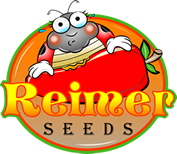ALL ITEMS ON SALE NOW - MAGA PRICING!
CLICK HERE TO LEARN MORE
FAQ & Answers
We ship world wide
CONTACT US FOR MORE HELP
Container Gardening
Growing Plants in Indoors
More and more people are growing plants in containers. It allows you to grow varieties that you otherwise would not be able to grow in short growing season areas, especially some varieties of hot peppers which have a long growing season. It is perfect for those living in apartments, for those who have small yards, and for the elderly or disabled who still want to enjoy gardening which otherwise they would not be able to do. Plants can be moved to sheltered areas during harsh weather conditions and brought indoors as the cooler weather arrives. Container gardening also allows you to grow plants all year long indoors or in a greenhouse. You can grow vegetables, herbs, flowers, and trees in containers.
Type of Containers
Use a container that is rust-resistant and one that has holes in the bottom for drainage. We recommend using plastic pots as they are inexpensive, lightweight, durable, easy to clean, and easy to move around. There are plastic containers with handles which should be used for larger and heavier plants. In hot regions, you should not use black pots as they tend to absorb heat. They can get very hot and may damage the root system. Light colored container reflect the heat and keep the roots cool. Use 2 gallon size containers for herbs and small vegetables, 5 gallon size containers for large vegetables, peppers, and short determinate tomato plants, and 10 gallon size containers for the large indeterminate tomato plants. If the plant grows too big for the pot, the roots can become root-bound. If it becomes root-bound, you will need to transplant the plant into a larger pot.
Container Gardening Growing Tips
The gardener needs to be concerned with the type of potting soil to use, the frequency of watering, types and frequency of fertilizing, optimal temperature & humidity, amount of sunlight & artificial light, insect problems, and possible plant diseases.
Type of Potting Mix
We recommend using Miracle-Gro Moisture Control Potting Mix as it protects the plants from the effects of over-watering and under-watering. Cover the hole at the bottom of containers with screen or black landscaping material before filling it with potting mix. This will keep the potting soil in and keep the slugs and insects out of the container.
Watering Frequency
You should water the plant thoroughly after transplanting into the pot and allow it to drain. More plants die from over-watering than any other reason in container gardening. Household water with fluorine can cause damage to some plants. For outdoor containers, use drip irrigation systems and water 5 to 10 minutes everyday.
Fertilizers
We also recommend using Miracle-Gro Water Soluble All Purpose Plant Food and Osmocote Outdoor & Indoor Slow Release Plant Food to fertilize the plants. Remember that hot peppers planted in containers need more fertilizer than if it was planted in the garden.
Temperature & Humidity
Temperatures should be between 65 and 80 degrees depending on the type of plants you intend on growing. Many plants benefit from spending some time outdoors during the summer. Gradually bring the plants outdoor in a partially shaded area before moving them to a full sun area to avoid sunburn. Move the plants indoors to protect them from freezing in the fall. It is important that the humidity is not too high as it could cause disease problems especially when growing in greenhouses. Humidity should be around 40 to 60 percent. Most plants will grow well in the temperature and humidity found in the average home. We do not recommend misting indoor plants continuously, as this can cause disease problems. Use fans for adequate ventilation to prevent this problem.
Sunlight & Artificial Light
Plants need the proper amount of light to grow. Most need between 10 and 16 hours of light, so use fluorescent lamps if the light is not sufficient, especially during the winter months. Most houseplants will do fine in South facing windows. Do a little research to find out how much light the particular plants you intend on growing. You can also invest in a light meter that will measure the amount of light where you intend on placing the containers.
Insects & Plant Disease

